- Administrator
- Albums and Singles
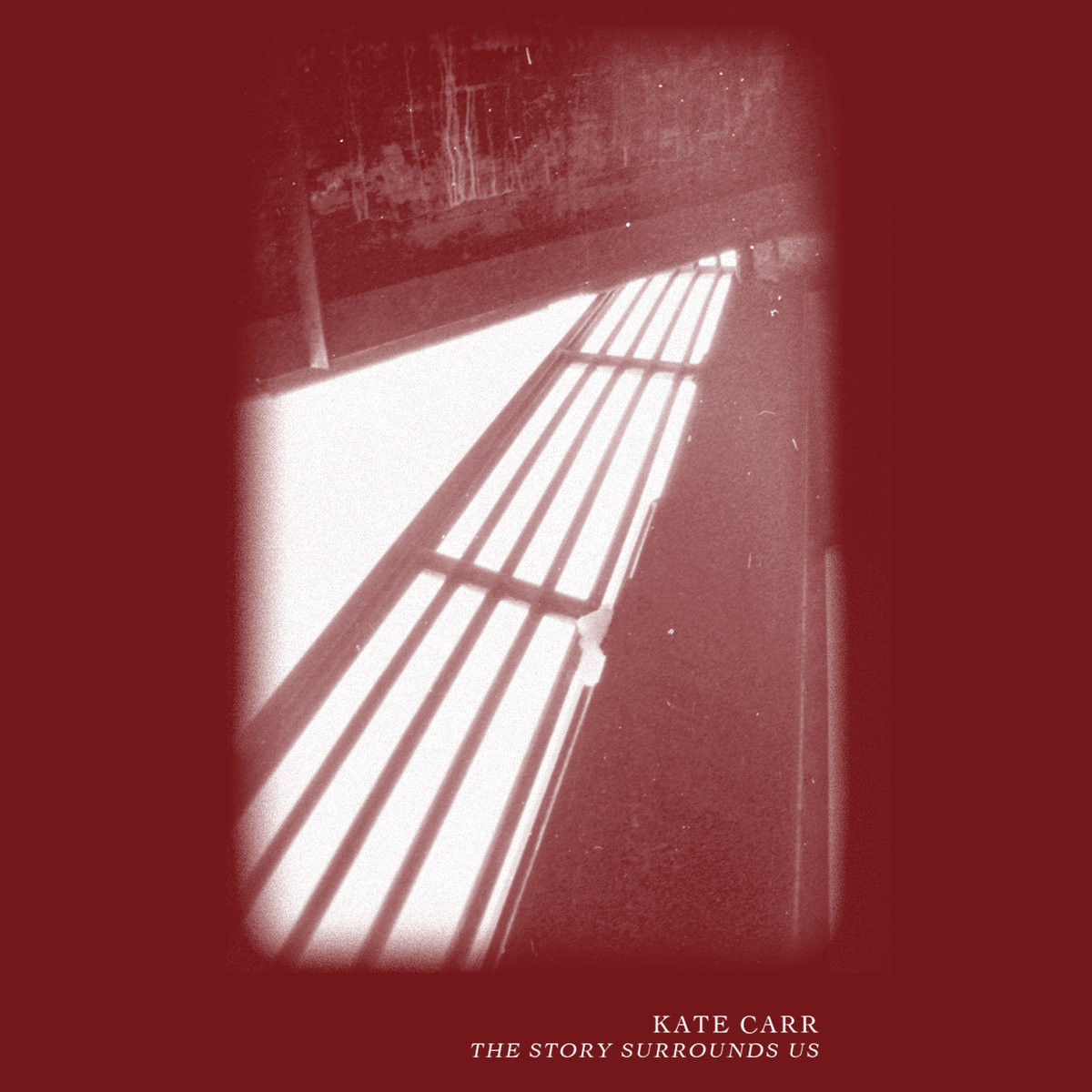 A rather fast follow-up to her last tape (It Was a Time of Laboured Metaphors, also on Helen Scarsdale), Australian sound artist Kate Carr's latest work is another entry in a rapidly growing discography that blends elements of both traditional composition and the unpredictable nature of field recordings. She does this and merges them together seamlessly, coming together as a beautiful set of sounds and moods from across the globe, yet still unified as a part of the human experience.
A rather fast follow-up to her last tape (It Was a Time of Laboured Metaphors, also on Helen Scarsdale), Australian sound artist Kate Carr's latest work is another entry in a rapidly growing discography that blends elements of both traditional composition and the unpredictable nature of field recordings. She does this and merges them together seamlessly, coming together as a beautiful set of sounds and moods from across the globe, yet still unified as a part of the human experience.
Elements of The Story Surrounds Us were recorded during Carr’s travels to Iceland, Mexico, Sweden, and Spain, all of which clearly had an influence on the work; most obviously in the natural recordings she utilizes throughout.The tape is bookended by two sets of untreated field recordings from Ólafsfjörður, Iceland that perfectly capture the juxtaposition of her work.The first, "The Creaking Door Of The Abandoned Concrete Factory" is half a minute of just that:creaking sounds of post-industrial decay, capturing the emptiness of what surely was once part of a thriving industry.The end is "Water Lapping at Ice on Melting Lake":the sound of wet and watery nature decaying, no doubt exacerbated by the same industry.
Between these two most obvious field recordings lay eight songs that are never truly a-musical, but never become overly conventional either."Things That Stubbornly And Resiliently Subsist Without Leave" features a lot of sparse, delicate guitar playing, but the musicality is broken up by mysterious, more synthetic-like passages that never become unpleasant.This combination also features heavily in "I Didn't Get A Lot of Sleep in Mexico", with light floating tones melded with processed guitar-like sounds, peppered with incidental found recordings and hints of music throughout.
A brilliant pairing of compositions is the untreated recordings of "Communication Wires In Tropical Storm, Si'an Kaan, Mexico", and their appearance in the more compositionally based "We Were The Pulse Of A Wire Pulled Tightly".The former recordings are simply the sound of undulating metallic cables whipped about in heavy winds, taking on an odd beauty that contrasts their significantly more frightening pedigree.On "We Were The Pulse…" they reappear as overt pulses and jittery echoes resonating within electronic swarms and insinuations of percussion.The final product is moody and expansive, but concludes on a much lighter, drifting note compared to its more menacing moments.
Other moments of this tape showcase Carr’s more conventional musical tendencies as well.Gentle melodies are the initial focus on "There Was a Lot of Whispering Involved", with a bit of plucked string being counterbalanced by the heavier subterranean rumble.On the whole it sounds much more traditional, but no less gripping.On the other hand, "1001 (Missed Connections)" begins with crackling voices on a PA system and ugly buzzing noises, but soon is realigned into sustained, yet chilly melodic moments.What even resembles a traditional 4/4 bass drum comes in, but just a bit too briefly.
Conceptually, The Story Surrounds Us continues Kate Carr's focus on studying the sounds of specific locations, as well as the effects of social decay and its inevitable renewal.However, the music is captivating on its own as well:a wonderful blend of composed sound blended with the incidental, ephemeral sounds that surround us at all times, culminating in a strange, sometimes almost alien, but never mundane experience.
samples:
- Things That Stubbornly And Resiliently Subsist Without Leave
- I Didn't Get A Lot of Sleep in Mexico
- 1001 (Missed Connections)
 
Read More
- Administrator
- Albums and Singles
 This is kind of a companion piece to 2015's absolutely sublime A Light At The Edge of The World, embracing a similarly fragile and dreamy mood, but taking a very different structural approach:  while its processor took the shape of an extended and gorgeously floating stasis, Everyone Goes Home When The Sun Sets consists of nearly twenty discrete and ephemeral miniatures.  That is not entirely new territory for Chalk, as that approach previously reached its apotheosis with 2012’s fine Forty-Nine Views In Rhapsodies' Wave Serene, but it is still a curious step away from his strengths and his longform comfort zone.  As such, Everyone Goes Home is not quite as immersive and hypnotic as Edge Of The World, but it is still a fairly unique release within Chalk's canon, as its gently hallucinatory drift of glimmering vignettes offers its share of nuanced and distinctively Chalk-ian pleasures.
This is kind of a companion piece to 2015's absolutely sublime A Light At The Edge of The World, embracing a similarly fragile and dreamy mood, but taking a very different structural approach:  while its processor took the shape of an extended and gorgeously floating stasis, Everyone Goes Home When The Sun Sets consists of nearly twenty discrete and ephemeral miniatures.  That is not entirely new territory for Chalk, as that approach previously reached its apotheosis with 2012’s fine Forty-Nine Views In Rhapsodies' Wave Serene, but it is still a curious step away from his strengths and his longform comfort zone.  As such, Everyone Goes Home is not quite as immersive and hypnotic as Edge Of The World, but it is still a fairly unique release within Chalk's canon, as its gently hallucinatory drift of glimmering vignettes offers its share of nuanced and distinctively Chalk-ian pleasures.
The overarching theme throughout Everyone Goes Home is one of elegant simplicity and fragility, as Chalk crafts most of these pieces from little more than rippling, reverb-soaked piano reveries or cascading and pointillist koto motifs.  With few exceptions, Chalk seems quite intent on evoking something quite vaporous and dream-like, eschewing strong melodies and distinct edges in favor of impressionist and slow-motion tumbles of arpeggios.  That is merely the foundation, however, as pieces like "Minsaori" seem far more like production experiments than fully formed compositions, as the delicately plinking lattice of notes takes on a subtly rich life of quietly squelching and whooshing textures.  Both of those sides of Chalk's artistry are clearly working towards a common cause, however, as his endgame seems to be the creation of a woozily pretty sort of soft-focus unreality, like the musical equivalent of a rippling sun-dappled pond or a snowfall experienced in extreme slow-motion with crystalline clarity.  Granted, Andrew Chalk has essentially made an entire career out of slowing down time and blurring reality, but this album takes that approach to a greater extreme than usual, offering up a gently flickering fantasia of glistening and self-contained microcosmic soundworlds.  There are certainly elements of Chalk's characteristic drone impulses to be found, but the far more prevalent theme is that of space between notes, inviting me to focus my attention upon the timbre and texture of each individual note that slowly rolls across Chalk’s miniature sound-portrait.
Naturally, such an aesthetic is not an attention-grabbing one, so Everyone Goes Home When The Sun Sets is predominantly for the already converted–a certain element of trust is required to give these shimmering compositional droplets the necessary attention to unlock their small but exquisite pleasures.  Occasionally, however, Chalk allows himself three or four minutes to stretch out into something a bit more substantial.  My favorite of the pieces in that vein is "Silk String Quintet," which beautifully combines a blurred and see-sawing sway with glittering, slow-motion washes of synthesizer chords.  Not many other pieces offer much in the way of an actual pulse though, as the album's other highlights rely upon alternate tactics to stand out.  The gorgeous and too-brief "San Baladino," for example, bolsters its shimmering and rippling backdrop with a lazily bittersweet synthesizer melody.  Synthesizers appear again in "Misty Island," serving as a lush and emotive backdrop of organ-like chords to Chalk's languorous trickle of bleary piano tones.  Yet another highlight is "Spiritual Lanterns," which weaves a fragile and gently tumbling koto melody that is shadowed and enhanced by a lovely nimbus of understated and watery harmonies.  The tenderly melancholy closer "Solstice" is yet another high point, as Chalk's unhurried and quietly moving koto meditation cuts through a hissing, quavering haze of wah-wah sizzle.  A similar tactic is employed with "Platform Under The Stars," albeit with glistening electric piano substituted for koto.  The subtle wah-wah use is a nice addition to Chalk's palette, as his combined arsenal of effects enables his tender snatches of melody to seemingly hang in the air as a living, breathing, and squelching haze.
That said, I was initially a bit underwhelmed by the album, partly because I had loved A Light At The Edge Of The World and was hoping for more of the same.  This is not an easy album to fall in love with even without the hurdle of unreasonable expectations though, as it kind of feels like a slightly warped Andrew Chalk record playing as I drift off to sleep and flicker in and out of consciousness.  That is not inherently a bad thing, but it does not offer any solid ground to grasp onto: motifs rarely stick around longer than a few minutes, there are fragmented suggestions of melodies rather than actual melodies, everything feels wobbly and out-of-focus, the pieces all feel like similar variations upon a very constrained theme, and there is not any readily apparent arc unfolding as the album progresses.  It ultimately grew on me quite a bit though, which I suppose makes this album the proverbial "slow-burner."  Granted, it will probably never be among my favorite Andrew Chalk albums, but it is a good one and I am glad that it exists: there are already plenty of excellent albums exploring other facets of Chalk's vision, so an experiment like this is a welcome departure from the expected.  There is a lot of fragmented and precariously quivering beauty to be found here–it just takes a bit more time and effort than usual to get acclimated to the unusual pacing and flow of these vignettes and sketches.  Actually, "fragments" might be a far better term, as this album does not sound like a collection of half-finished ideas so much as it resembles a complete and coherent composition that has been purposely shattered.  That may also be the perfect simile for Chalk's aesthetic here: if a great Andrew Chalk album is like a beautiful and mysterious photograph that I can get lost in, Everyone Goes Home is like smashing the frame and studying the subtle refractions of light as the shards rain down and time slows to a complete stop.
 
Read More
- Administrator
- Albums and Singles
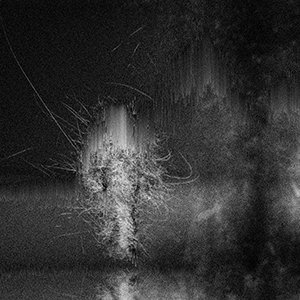 As a follow-up to 2015's debut EP, the duo of multimedia artists Nicol Eltzroth Rosendorf and Jonathan Lukens expand on the ambiguity and sparseness on Two, while still showing marked development and innovation in their work. With their sonic palates expanded and a determined focus, the final product is an album that conveys a significant amount within its somewhat minimalistic framework.
As a follow-up to 2015's debut EP, the duo of multimedia artists Nicol Eltzroth Rosendorf and Jonathan Lukens expand on the ambiguity and sparseness on Two, while still showing marked development and innovation in their work. With their sonic palates expanded and a determined focus, the final product is an album that conveys a significant amount within its somewhat minimalistic framework.
With nine pieces spread over two sides of a cassette, there is a clear sense of two distinct suites of music, joined together but with each half developing and evolving on its own as a distinct organism.The slow, bleak opening of "Wolf Tone" sets the stage as sparse yet deliberate.Bleak melodies are perceptible, but low in the mix, to give a nicely haunting sense of space. This transitions into "Duet," which sees the duo adding an intentionally erratic kick drum into the already complex layered structure.The layers swell and retreat, providing a strong contrast to the more strident rhythms that stab through.
The overt beats retreat on "Circularity of Action," but the piece comes together as a science fiction tinged composition, with hollow machinery noises reverberating throughout a cold, clinically clean space.The piece does not move as much as drift on its own inertia, and although the piece is extremely rich and complex, there is an unabashed frigidity to the music.The closer of side one, "Null," is a brief respite that ends the first half very well.Instead of the icy space that preceded it, it is more of a warm, pleasant cloud of sounds that slowly fill the space and concludes the first half on a calm note.
On the other half, Rosendorf and Lukens start off big with "Tremendum."Multiple passages of dissonance and melody intersect, propelled by a rumbling low end and expansive mid range of sound.The sound is a bit of everything, but never discordant or chaotic in nature.Instead it is a strong balance of noise and tone, and covers the Scratched Glass school of sound perfectly.Comparatively, "Manifest" is a bit more understated, and has a pleasant murk to it, with the two weaving in a nice passage of feedback-like chaos to contrast the calmer moments.
"Perverse Instantiation" features a return to rhythm, though much less conventional than heard on "Duet."Instead the work is more an examination of textures, with a continual shift between the more musical facets of the band’s sound, and their occasionally abrasive approaches.This transitions into "Gold," although at this point there is a greater sense of space and expanse.The harsher elements build slowly simmering and eventually become the primary focus.The second half of Two is tied up nicely on "Normative", a slowly lurching piece that pulls the entire tape together handily.
Scratched Glass’ debut was a good bit of ambiguous sound and composition, but Two feels like a more fully realized work.The strongest elements of the first tape are still here: a blending of dichotomous sounds, but the whole is stronger this time around.While I would have enjoyed hearing Rosendorf and Lukens flirt with rhythms a bit more as they did on "Duet," the nuanced and constantly evolving sound on this tape is extremely effective in its own right.
samples:
 
Read More
- Administrator
- Albums and Singles
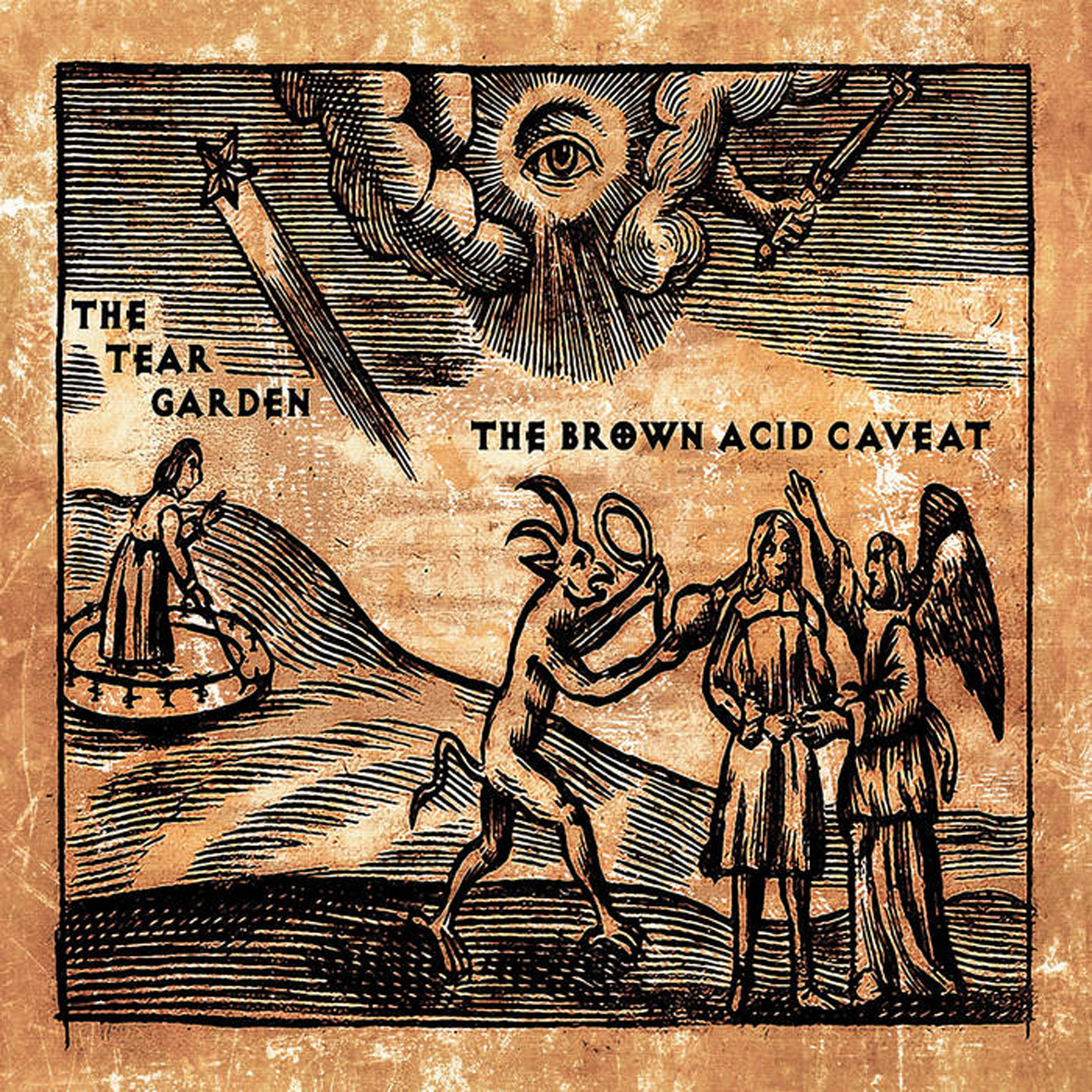 I had absolutely no idea what to expect from a new Tear Garden album, as it has been nearly a decade since the last one and The Brown Acid Caveat slowly came together while cEvin Key was dealing with cancer and Edward Ka-Spel was deeply immersed in I Can Spin A Rainbow.  Despite that, the impending release bizarrely took on a near-mythic significance for me, as this project has inspired several of Ka-Spel most enduring moments of genius ("Romulus and Venus," "Hyperform," etc.) and he has been riding quite a (fitful) hot streak over the last few years.  Also, the time simply felt right for The Tear Garden to return.  Happily, Caveat largely lives up to my unreasonably high expectations even while it subverts them, as the duo largely eschew deep psychedelia in favor of propulsive, tightly structured electronic pop (albeit with some inspired detours along the way).  Naturally, the album’s hookiness is mingled with Ka-Spel and Key's deeply skewed and oft-hallucinatory aesthetic, but I was still completely unprepared for the throbbing disco groove of the opening "Strange Land."
I had absolutely no idea what to expect from a new Tear Garden album, as it has been nearly a decade since the last one and The Brown Acid Caveat slowly came together while cEvin Key was dealing with cancer and Edward Ka-Spel was deeply immersed in I Can Spin A Rainbow.  Despite that, the impending release bizarrely took on a near-mythic significance for me, as this project has inspired several of Ka-Spel most enduring moments of genius ("Romulus and Venus," "Hyperform," etc.) and he has been riding quite a (fitful) hot streak over the last few years.  Also, the time simply felt right for The Tear Garden to return.  Happily, Caveat largely lives up to my unreasonably high expectations even while it subverts them, as the duo largely eschew deep psychedelia in favor of propulsive, tightly structured electronic pop (albeit with some inspired detours along the way).  Naturally, the album’s hookiness is mingled with Ka-Spel and Key's deeply skewed and oft-hallucinatory aesthetic, but I was still completely unprepared for the throbbing disco groove of the opening "Strange Land."
Metropolis/Sub-Conscious Communications
I dearly wish I could have been at the listening party that Key and Ka-Spel threw in LA for the release of this album (it was a crowd-funded release), as I would have absolutely loved to see the looks on everyone's faces when they hit "play" and the sexy bass throb and disco thump erupted from the speakers.  "Strange Land" is definitely the first Tear Garden song that I can imagine someone blasting as they speed along the Autobahn in a classic convertible, but Edward Ka-Spel is still Edward Ka-Spel, so the infectious groove, jangling guitars, and strong melodies are still shot through with a healthy dose of surreality–it just happens to be couched in stronger hooks than usual.  While the naked catchiness of "Strange Land" turns out to be a bit of an exception (sadly, this is not quite The Tear Garden’s "party album"), Key and Ka-Spel definitely place a very strong emphasis on groove and tight structure here.  The closest thing to another would-be hit single is only "Calling Time," which boasts a similarly fluid bass line, 4/4 thump, tight structure, and penchant for catchy vocal melodies.  Within that poppy framework, however, the duo allow quite a bit more weirdness to kick in, as the beat features an exhalation-like call-and-response snare and the piece becomes increasing buffeted by sputtering and jabbering electronics as it unfolds.  Less accessible still is my favorite piece on the album, "Lola's Rock," a classic Ka-Spel narrative about a giant meteor speeding toward the earth that unfolds over an erratically stumbling beat mingled with woozy Theremin-like synths, squiggling electronics, deranged-sounding textural intrusions, and dubby percussion flourishes (quite fitting, given that Twilight Circus's Ryan Moore had a hand in some of these recordings).
The rest of the album is a considerably less groove-centric, however: the first half feels like an appealingly hooky gateway designed to lure me into the deeper and more lysergic waters of the second half.  The duo's pop instincts largely remain intact though, even as they leave the surrealist dancefloor far in the rearview mirror.  On the lovely and lilting waltz "Kiss Don’t Tell," Key and Ka-Spel craft a gorgeous piece of psychedelic chamber pop that feels like it was recorded inside a snowglobe: the swaying and elegant rhythm, the twinkling synth melodies, and the languorous glissando of Martijn De Kleer’s guitar all combine to evoke a wonderful illusion of timelessness and dreamy unreality.  Elsewhere, the duo shine again with the simmering and faintly menacing "Sinister Science," which weaves a brooding spell from a skeletal groove, a richly textured haze of electronic effects, and Patrick Wright's Romantic and melancholy strings.  "Stars On The Sidewalk," on the other hand, feels like a reprise of the winning "Hyperform" formula: a slow-burning and minimalist pulse of insistent synthesizer endlessly creeps forward beneath Ka-Spel's ominous and understated vocals.  More than anything else on the album, "Stars" sounds like a return to the classic Tear Garden sound, right down to an extended length and an interlude of expected psych tropes like a guitar solo and some space-y whooshing.  I like it, but this latest reconvening of the core duo has largely transcended the more straight-forward psychedelia of their early years.  The Tear Garden is on another plane altogether these days, so indulgences and rock-isms feel conspicuously out of place now.  Even during its weaker moments, The Brown Acid Caveat shows that Ka-Spel and Key can engage in any kind of stylistic tourism they wish and still come out with a memorable song that nimbly dodges pastiche and feels very much like Tear Garden (i.e. the acoustic blues of the closing "Object").  During their stronger moments like "Lola’s Rock," however, Key and Ka-Spel display a distinctive vision and synergistic chemistry that no one else could possibly replicate.
If The Brown Acid Caveat has a flaw, it is probably its length: it would be much stronger if it were condensed into a single LP rather than a double one.  In Tear Garden's defense, however, they simply had an excess of fine material to share: while this might be an overwhelming album to take in in one sitting, it is nevertheless a solid and filler-free affair from start to finish.  Also, plunging into an epic like this feels like a legitimately immersive and mind-bending event, which is probably something that could not be achieved with a condensed version that pared away everything but the highlights.  My other minor quibble is more of an observation: previous and more uneven Tear Garden albums have yielded some of my favorite songs ever ("In Search of My Rose," for example), yet there is tentatively nothing on The Brown Acid Caveat that quite joins that rarefied pantheon.  The compensation, however, is that this album is probably the strongest whole that the union of Key and Ka-Spel has ever produced: everything here is at least very good and a handful of pieces are even better than that.  In more practical terms, I will probably be putting "Romulus and Venus" on mixtapes until I die, but when I want to dive into an entire Tear Garden album, this will most likely be the one that I choose. As such, my minor grievances are mostly just reasons why this legitimately excellent album falls shy of being a legitimately perfect album: my overall impression is almost entirely delight.  I would have been happy with just a return to form, but The Brown Acid Caveat feels like the reinvigorated beginning of a promising new chapter, which is a truly astonishing feat from a project three decades into its run.
 
Read More
- Administrator
- Albums and Singles

Edward Ka-Spel is certainly having quite an amazing year, already releasing two great albums in the form of I Can Spin A Rainbow and The Brown Acid Caveat.  This deeply strange and proggy solo effort is kind of a bizarre bridge between those two peaks, featuring occasional contributions from Amanda Palmer and seemingly expanding upon the thematic premise of The Tear Garden's "Lola’s Rock."  High On Station Yellow Moon also feels like a repository for all of Ka-Spel's recent ideas that were too abstract and unstructured for his "proper" albums–like a pressure-release valve for an overactive mind.  In that sense, there is a definite resemblance to the collaged, free-form aesthetic of The Legendary Pink Dots' Chemical Playschool series, albeit with a fairly consistent and intriguing thematic thread weaving through it all.  Another similarity to the Chemical Playschool series is that Yellow Moon can be a meandering and frustrating listen at times, but patient listeners will be rewarded by an occasional sustained passage that captures Ka-Spel at the absolute peak of his powers.
The basic premise of High on Station Yellow Moon is laid out with reasonable clarity in the album's first half: a comet is hurtling towards the earth and a trio of astronauts (each of whom speaks a different language) is marooned on the titular space station with no way to communicate with the outside world or measure time, as a solar flare wipes out all of their electronics.  After that, however, the story quickly becomes very fractured and muddied, as does the structure: each half of the album consists of a five-part suite of small vignettes the blur and bleed together.  Much of the background is laid out in the surprisingly lyrical and simple piano ballad "OMG 666," in which the narrator expresses his optimism that technology will save everyone from the comet and that there is no need to worry…but then it blossoms into a lushly swirling darkness of crackling radio transmissions, brooding synthesizers, and distracted and decontextualized female vocals and the narrator delves into the alternate possibility of everyone being completely obliterated.  Unexpectedly, that schizophrenic introduction gives way to the album's mesmerizing centerpiece, a lengthy and haunting spoken-word passage in which Ka-Spel describes the moment when the space station’s astronauts are suddenly left stranded in space with nothing but each other.  After that point, clarity and lasting structure become rare commodities and the album dissolves into something of a kaleidoscopic fever dream, though it does re-cohere briefly for a lilting ballad with Palmer ("The Leary Cloud") that beautifully embellishes its Romantic neo-classicism with an unpredictably garbled and smeared onslaught of warped psychedelia.  The side ominously closes with that piece being pulled apart into a lurching and disjointed groove of decontextualized fragments.
The second half of the album opens with a buzzing and skittering piece entitled "Provisional" that sounds like a distant radio transmission struggling through a haze of static.  If it were not for that willfully corroded and trebly texture and a penchant for suddenly fading or dissolving, it could probably pass of a decent Legendary Pink Dots song.  That said, it abruptly gives way to yet another spoken word passage in which one of the astronauts recounts the lonely, isolated horror of being trapped forever inside a space suit.  The structure of the album definitely starts to mirror that escalating horror and feeling of disconnection at this point, as Ka-Spel cycles through his surreal and vaguely haunted-sounding motifs without giving me much time to establish my moorings.  He thankfully has one more rabbit in his hat though, as Palmer returns for the album’s other centerpiece "Eight Mile Bride," a tender and unsettling music box interlude from the perspective of a woman who performs for the astronauts in exchange for "wonderpills," but can never be reached or touched ("the entertainment for lonely men with fishbowls on their heads…untouchable").  After that sad, weirdly beautiful, and vaguely creepy interlude, the remaining minutes gradually cohere into a bleak and brooding coda of melancholy strings, mysterious textures, and uneasy drones that feels like an elegy for the hapless astronauts dying together (yet so alone) in the vastness of space.  Appropriately, the album concludes with a bitterly sardonic poem from Ka-Spel that ends with a scathing indictment of God.
Curiously, the CD version appends two bonus tracks, which maddeningly undercuts the bleak finality of Ka-Spel’s closing words.  Sequencing crimes aside, however, the bonus songs themselves are generally quite good.  One is an alternate stand-alone (if somewhat unnecessary) version of "The Leary Cloud," while "No One Can Hear You Squeak" is a nice bit of stark drone, dark atmosphere, and simmering tension enlivened by some subtly visceral textural touches that sometimes resemble a slow drizzle of broken glass or shards of metal.  The latter is absolutely good enough to have warranted inclusion of the actual album, but the symmetry and arc of the vinyl version sans bonus material feels like the more definitive and powerful version.  Of course, odds are strong that anyone interested in High on Station Yellow Moon is probably a bit of a Legendary Pink Dots' completist, as this is a comparatively modest release in a prolific year.  There is no question that most of Ka-Spel's best ideas went elsewhere, as it definitely feels like this album has a lot of vault scrapings and studio scraps inserted as bridges between the more fully formed passages.  There are fully formed passages though and Ka-Spel spins what little gold he has into an immersively surreal and evocative whole, even if he leaves the seams showing a bit (moderate expectactations are key here).  Yellow Moon is a solid, mid-tier album: if it lacks the compositional rigor and songcraft of Ka-Spel's best work, it compensates through sheer imagination and a few orphaned flashes of brilliance that did not find a home elsewhere.
- High On Station Yellow Moon, Part One
- High On Station Yellow Moon, Part Two
- The Leary Cloud (A Slight Return)
 
Read More
- Administrator
- Albums and Singles
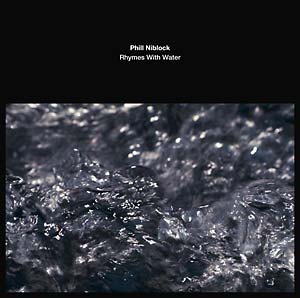
For his premiere recording on GODrec,
Phill Niblock confirms his minimalistic musical approach
and composes two monumental pieces for flutes and additional voices respectively.
Commissioned by Erik Drescher and Natalia Pschenitschnikova,
Niblock again delivers almost stripped, uncompromising one-way sound monolith.
Tremendous and straight and to the point...
More information can be found here.
Read More
- Administrator
- Albums and Singles

Strut present the first official reissue of a landmark album in the field of African music, Mulatu Astatke's Mulatu Of Ethiopia from 1972. Recorded in New York, the album arrived at a time when Astatke had begun to master the delicate fusion of styles needed to create Ethio jazz. "I left the UK for America and studied at Berklee College in Boston. I learnt the technical aspects of jazz and gained a beautiful understanding of many different types of music. That's where I got my tools. Berklee really shook me up."
Journeying regularly to the Big Apple to play and watch live shows at the Cheetah, the Palladium and the Village Gate, Astatke met producer Gil Snapper on the circuit. "Gil was a nice and very interesting guy. He produced music and worked with all kinds of musicians." The meeting would lead to a series of albums on Snapper's Worthy label. The first, Afro Latin Soul, documented Astatke's new-found directions. "Mulatu has created a new sound," enthused Snapper on the album jacket. "He has taken the ancient five-tone scales of Asia and Africa and woven them into something unique and exciting; a mixture of three cultures, Ethiopian, Puerto Rican and American."
A second volume of Afro Latin Soul followed before Astatke began to hone his sound further, infusing funk and Azmari "chik-chikka" rhythms into the mix. Returning to a downtown Manhattan studio with Snapper and working with some of the city’s top young jazz and latin session players, Mulatu Of Ethiopia began to take shape. "We rehearsed for 3-4 weeks," remembers Astatke. "It took them a while to get the right feeling in the music."
The resultant album represented the first fully formed document of Astatke's trademark Ethio-jazz sound. It features "Kulunmanqueleshi," "Dewel," and "Kasalefku-Hulu," tracks that Mulatu would return to regularly on singles and in live shows, the Ethio-Latin workout "Chifara," and the self-titled groover "Mulatu" ("I wanted to make a track for…. myself!").
This definitive reissue of the album comes in a limited edition 3LP 6-panel gatefold set featuring the stereo album master, a pre-mix mono master and a selection of out-takes from the sessions, giving the listener rare access to the DNA of the studio process. Also available are standard 1CD and 1LP formats. All formats feature a new interview with Mulatu Astatke and rare photos.
More information can be found here.
Read More
- Administrator
- Albums and Singles

IN THE SUMMER OF 2016 BEN FROST LANDED IN CHICAGO TO WORK WITH STEVE ALBINI. OVER TWO WEEKS - VAST SYSTEMS; UNSTABLE, OVERLOADED, AND ON THE VERGE OF COLLAPSE - WERE FED INTO AN ARRAY OF AMPLIFIERS INSIDE A CAVERNOUS STUDIO. SHAPES WERE FORMED, SPEAKERS WERE TORN. BEHIND THE GLASS ALBINI COMMITTED LIVE PERFORMANCES TO TAPE; SLASHING AT THEM INTERMITTENTLY WITH A RAZORBLADE. MORE THAN 2 HOURS OF MUSIC WAS RECORDED.
THE THRESHOLD OF FAITH EP IS THE FIRST RELEASE OF MUSIC FROM THOSE SESSIONS.
More information can be found here.
Read More
- Administrator
- Albums and Singles

"Ian shared this live performance with me in January of 2017, while I was living in London for work. I fell asleep countless times whilst listening to this, day and night. After some arm twisting Ian agreed to let me publish it. He had not planned on releasing it officially.
Durbē embodies the most elegant and meditative aspects of Ian's music. Live, Ian's music is able to stretch and fold and soak. These long-form takes show how purely structure and melody rotate within him. In the fall of 2016, Ian performed these recordings in a 14th-century Latvian church. This environment kissed Ian's cheek that evening, and he sang in top form, ascending into the rafters."
-Sean McCann
More information can be found here.
Read More
- Administrator
- Albums and Singles

Floating on a plume of pure shoegaze, Lignin Poise conjures nature, specifically the waters and forests of the Cascadia bioregion, as ecstatic reverie. It is a work of deliberate renewal in a time of global tumult. A golden oasis of deep memory open to all seekers; hallucinogenic, like stumbling into one of the verdant, highly-oxygenated upper canyons of the Columbia River Gorge on a late spring morning, soaking in the warm humidity and cool mist.
After the sold-out cassette release of Stanza / Stanza II on Beacon Sound/Baro in 2015, and last year's The Benoit Pioulard Listening Matter on Kranky, Seattle's Thomas Meluch returns with a brand new Benoit Pioulard album of ambient bliss.
Out September 8th on Beacon Sound.
Read More
- Administrator
- Albums and Singles
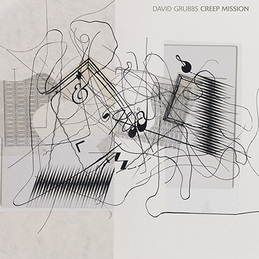
David Grubbs, Creep Mission
Blue Chopsticks BC29 LP/CD
http://www.dragcity.com/products/creep-mission
If “mission creep” refers to a long-haul fatigue cited with increasingly regularity in the present political moment, David Grubbs imagines “creep mission” to be a talismanic utterance in the effort to turn this ship around.
Creep Mission is an album of instrumental compositions with Grubbs’s effortlessly recombinant electric guitar at its core, and its m.o. is to go both deep and wide. The album goes deep in the sense that the guitar becomes the relentless, meditative focus of these songs without words, and it goes wide in that these pieces utilize a discontinuous set of arrangements that make the most out of an extraordinary group of musicians convened for the mission at hand.
Drummer and most simpatico sparring partner Eli Keszler picks up where his brilliant contributions to Grubbs’s 2016 Prismrose left off; trumpeter Nate Wooley defies you to identify his range of sounds as coming from a single player; and Jan St. Werner (Mouse on Mars, Lithops) can hardly contain his joy in transforming the proceedings into electro-prismatic splinters. For his part, Grubbs’s guitar playing has never before so confidently mangled commonsensical distinctions between composed and improvised music.
The album’s opener, “Slylight,” wends its way through a sequence of instrumental combinations in a manner redolent of Gastr del Sol’s Camoufleur. Before the album has concluded with the melancholy country raga of “The C in Certain,” waystations between have assumed the character of sludge-rock power trio (“Creep Mission,” “Return of the Creep”), pointillistic electroacoustic improv (“Jeremiadaic”), and bejeweled nylon-string guitar miniatures (“The Bonapartes of Baltimore,” “Jack Dracula in a Bar”).
David Grubbs’s solo albums often have a “the band has left the building” quality of dramatic left turns in the final act; on Creep Mission, peripatetic playing is basic strategy.
Related Blue Chopsticks titles:
BC2 David Grubbs & Mats Gustafsson, Apertura
BC5 David Grubbs, The Coxcomb / Avocado Orange
BC9 David Grubbs, Act Five, Scene One
BC11 David Grubbs & Mats Gustafsson, Off-Road
BC17 David Grubbs & Susan Howe, Souls of the Labadie Tract
BC20 David Grubbs, Hybrid Songbox.4
BC21 Belfi / Grubbs / Pilia, Onrushing Cloud
BC22 Susan Howe & David Grubbs, Frolic Architecture
BC23 Wingdale Community Singers, Night, Sleep, Death
BC24 David Grubbs, Borough of Broken Umbrellas
BC25 Belfi / Grubbs / Pilia, Dust & Mirrors
BC27 Susan Howe & David Grubbs, WOODSLIPPERCOUNTERCLATTER
BC28 David Grubbs, Prismrose
Read More

